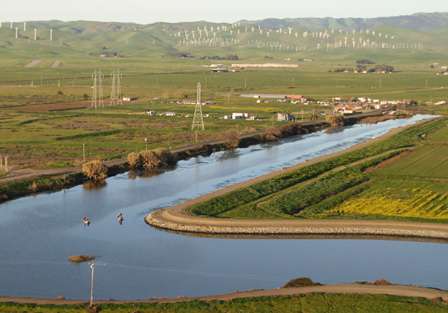
If you hang around enough tournament weigh ins, you'll hear all kinds of ideas and theories. Some are obviously correct, some are remarkably stupid, and some are up for grabs — they require more information or research before being lumped into one of the first two categories.
A few weeks ago, I was at the Elite Series event on the St. Johns River. It was Day Two, and I was on the docks getting ready to hop aboard a volunteer boat and chase the top contenders around the water, taking pictures, blogging and generally soaking up another tournament experience.
Before we took off, I was talking with Hank Weldon (son of tournament director Trip Weldon), and we were speculating on what the catches might be like. In particular, we were guessing what it might take to make the first cut that reduces the field from 99 to 50 anglers.
Hank — who's a smart guy and has been to more than one rodeo — mentioned the old axiom for estimating the necessary weight to make the cut (or win). You take the Day One weight, double it and then shave a little off — just how much is a matter of art left to the estimator.
Then Hank said something I'd been thinking about for several years.
"I'm not sure the weights actually drop for these guys on the second day," he said. "I think they might even increase."
I immediately agreed with him and told him I'd been toying with the idea of running the numbers and seeing just what happens to catches after Day One.
Well Hank (and you, too), I finally put the numbers together and am ready to offer what should pass for a definitive answer to this age-old question:
Do tournament weights drop after Day One and, if so, how much?
Yes, after compiling all the numbers from the first five and a half years of Elite Series tournaments (53 in all), I can definitely tell you that the weights drop.
But I bet you'll be surprised by how much they drop.
I used Elite Series numbers for several reasons. First, they're recent (starting in 2006). Second, they represent the highest level of tournament fishing. Third, the tournaments have been all over the country at various times of the year. Finally, there have been "only" 53 Elite events, which is a solid sample, but still manageable.
Here's what I learned:
- Weights dropped from the first day to the second day, but the drop was almost imperceptible — 1.01 percent. That's less than 3 ounces for an average catch. In other words, if the average angler brought in 12 pounds, 15 ounces on Day One (and that's almost exactly the average angler weight for Day One over the 53 Elite events), he brought in 12-12 on Day Two.
- The biggest drop in Elite history between the first two days occurred on the Mississippi River in 2009. It was a brutally tough tournament and catches were down. On the first day, the field weighed in just 620-4, but on the second day it fell precipitously to 506-15 — a 22 percent decline.
- The biggest increase in Elite history between Day One and Day Two happened in 2010 at the California Delta. Again, weights weren't all that great, and on the first day the field weighed in 738-8, but on Day Two catches ballooned to 1079-4 — a 46 percent increase!
- In all, out of 53 events, weights dropped after the first day 34 times and increased after the first day 19 times.
The size of the database for this research was pretty considerable. Fifty-three tournaments may not sound like a lot, but that's 10,872 angler days and 139,628 pounds of bass!
The unanswered question here is how much does it matter that I used Elite Series data to reach these conclusions?
My best guess is that it matters a lot. The Elites are generally a lot better than the anglers in other tournament series: They're accustomed to fishing multiple day events, and they're good at expanding their patterns and refining what works as the tournament progresses. I'm convinced that last factor is really what separates the men from the boys in big-time tournament competition.
If you're a bass clubber, and your club has an annual two-day tournament, I'll bet you can watch weights slip almost every year from one day to the next. It's certainly true for the club events I've fished.
Most of us just aren't very experienced when it comes to multiple day tournaments, and it shows in our results. We don't locate enough bass in practice to support a two- or three-day tournament or we burn out the fish we found in the opening round through poor management.
In the final analysis (at least when it comes to the highest level of professional bass fishing), tournament weights do slip from the first day to the next, but not noticeably.
Now, when you make a prediction about second round weights, take a look at what came in on Day One, double it and stop right there.





